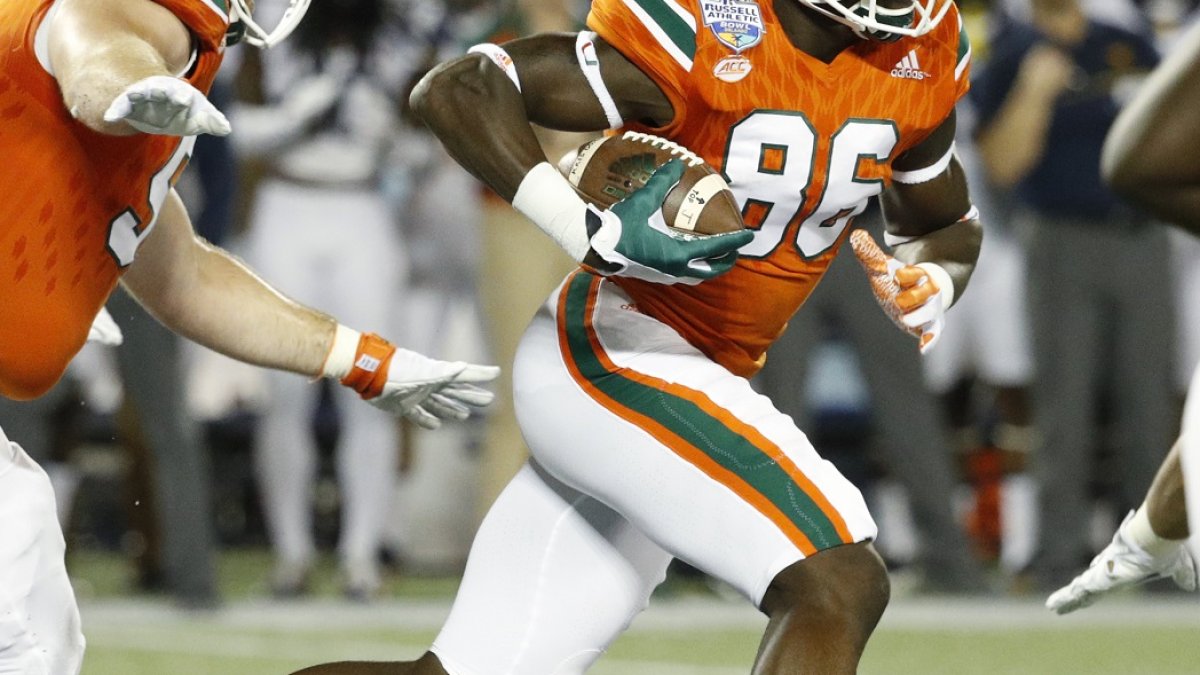Name: David Njoku
School: Miami (FL)
Position fit: Tight end
Stats to know: Averaged 11.2 yards after the catch per reception in 2016, the most by all draft-eligible tight ends by over a yard.
What he does well
- Tracks ball well downfield.
- Good top-end speed.
- Strong balance and body control, likely his biggest strength.
- Good at using his hands and size to create late separation at the catch point.
- Strong hands, tough for DBs to break up passes after he has the ball in his grasp.
- Tough to press him with smaller defenders.
- Effective option-route runner, uses linebackers leverage against them to create space in zones.
- Consistently seals 7-tech to the inside on front side of gap-scheme runs.
- Locates well when moving to the 2L in run game.
Biggest concern
- Had seven drops on 71 catchable targets over the past two seasons, majority coming when open, has a tendency to not see the ball all the way in.
- Slow acceleration, doesn’t explode off the line.
- Not overly elusive, forced many missed tackles in college based off size and balance.
- Struggles when tasked with sealing 8/9-tech’s to the outside on front side of gap-scheme runs; often gets beat to the inside forcing RB to bounce the run to the outside.
- Can get too tall when moving laterally blocking inline, allows defenders to get under his pads and control the movement.
NFL comparison: Jordan Reed, Washington Redskins
Like Reed, Njoku figures to have more NFL success as a receiving option than he does as a run-blocker, while showing competence as a run-blocker when the alignment is in his favor. Neither player is overly elusive but both are effective with the ball in their hands due to a combination of size, top-end speed and a willingness to punch the defense in the mouth, don’t be surprised if there’s a highlight of Njoku hurdling over a defender next season.
Bottom line: Njoku has legitimate concerns as a run-blocker. He ranked 36th among 77 qualified, draft-eligible tight ends this season in terms of run-block grading after finishing 26th among the group in 2015; he could really struggle against NFL edge defenders with an explosive first step. With that being said, he’s also a legitimate Day 1 starter as a receiving option. He works well both off the line and in the slot, effectively finds the seams down the middle of the field and his footwork on out-routes will repeatedly find him separating from linebackers tasked with covering him; at the very least he should provide a nice safety blanket underneath for his QB.
Exclusive content for premium subscribers

WANT TO KEEP READING?
Dominate Fantasy Football & Betting with AI-Powered Data & Tools Trusted By All 32 Teams
Already have a subscription? Log in



 © 2025 PFF - all rights reserved.
© 2025 PFF - all rights reserved.